The history of tartan
The story of how a Highland tradition became the badge of Scotland’s national identity is full of paradox and misconceptions says Mary Miers.


From Princes Street to Piccadilly, the sight of a kilted figure conjures up a plethora of images: a Highland chieftain, a Jacobite, a Scottish soldier; Ossian on a mist-wreathed mountain, a character from a Walter Scott novel; a Scotch Baronial laird, his gillie; a toff dancing an Eightsome in an antlered hall, a pibroch-playing piper at a graveside; Lochaber no more, Donald ‘down from the Isle of Skye’, lassies performing a competitive Highland Fling; Harry Lauder, Andy Stewart, The White Heather Club; Jimmy Shand & His Band, the Bay City Rollers, Malcolm McLaren in punk-rock gear; a guest at a Rotary Club or Burns Night supper, a bridegroom in hired regalia; a Tartan Army football fan; young, cool, contemporary urban Scots bristling with machismo.
No other country has a sartorial image more democratic and universal, yet the story of Scotland’s national dress is controversial and divisive. The popular view is that it’s all a Victorian charade, that tartan dress is the product of a Romantic folk culture and that an Englishman invented the kilt. Over the years, this argument has been perpetuated by leading historians, notably in recent decades Eric Hobsbawm and Hugh Trevor-Roper, whose persuasive essays claim that Scotland’s culture has always been sustained by forgery.
Plundering from earlier writers in recycling 18th-century notions of Gaels as primitive philistines, Trevor-Roper’s provocative The Invention of Scotland stokes up old rivalries while ignoring a wealth of evidence to the contrary.
The counter argument has not, beyond Scottish academia, been widely enough aired. One authority who has written extensively on the subject, and whose book Tartan: The Highland Habit provides an excellent overview, is Hugh Cheape, a Gaelic-speaking historian with an intimate knowledge of the Gàidhealtachd. Prof Cheape shows how important elaborate dress was to late-medieval Gaelic society, which, far from being immured in bar-barous isolation, had strong links with contemporary European culture. Finely made and richly coloured tartans were the Highland equivalent of Renaissance fashion at a time of great change and cultural flowering.
This was the period that created the image of the Highlander as a vigorous warrior, his tartan dress idealised in the panegyric poetry of the bards. In a portrait by John Michael Wright, Lord Mungo Murray exudes confidence in this guise, the predominance of red in his fashionable tartan outfit signifying his prestige. The art of weaving blocks and stripes of colour is an ancient and universal one.
Tartan as we might recognise it is first referred to in Scotland in the 16th century. Writing in Latin in 1521, John Mair described the ‘over-garment’ of Highlanders as consisting of a ‘loose plaid’ or woollen cloth woven in coloured stripes, over a ‘shirt saffron dyed’, below which ‘from the mid-leg to the foot the men of the high land go uncovered’. Highland women wore a plaid shawl, or earasaid.
In 1538, James V ordered a tartan hunting outfit, and the English poet John Taylor described the colourful spectacle of the Earl of Mar’s guests on his great deer drive at Braemar in 1618: they wore stockings of ‘a warm stuff of divers colours, which they call tartan: as for breeches, many of them nor their fore-fathers, never wore any, but a jerkin of the same stuff that their hose is of… with a plaid about their shoulders, which is a mantle of divers colours, of much finer and lighter stuff than their hose, with blue flat caps on their heads’.
Exquisite houses, the beauty of Nature, and how to get the most from your life, straight to your inbox.
Such outfits were practical for riding and led to the aristocratic fashion for tartan trews (triubhas), a garment currently much in vogue again as a more practical, and often more flattering, alternative to the kilt.
Tartan was worn by at all levels of Gaelic society, although not all the time typically, it was donned for journeying, which is why it was conspicuous to visitors. The kilt was not as we know it today, but a length of tartan (the Gaelic for this English word is breacan, meaning speckled) ‘gathered at the waist by a belt, pinned on the shoulder by a brooch, and worn kilted on the thighs’. This could be adapted to create an enveloping hood or shawl; it was worn at every rank, not just by peasants.
First depicted in the early 16th century, the breacan an fhèilidh was described in about 1725 by the English treasury commissioner Edward Burt as a ‘petticoat so very short, that in a windy day, going up a hill, or stooping, the indecency of it is plainly discovered’.
A widely quoted theory (derived from a letter published in 1785) is that the modern kilt or fèileadh beag (short kilt), was invented in about 1720 by the English Quaker industrialist Thomas Rawlinson as a less cumbersome apparel for his Highland labourers. This contention obscures evidence dating back to the late 17th century and seems mischievously divisive. It’s clear that the belted plaid (fèileadh mòr) evolved gradually without the help of an Englishman and that, by the 18th century, the detached garment we know today was widely worn in varying degrees of quality and status.
By this time, tartan had developed complex political implications. It became a symbol of Jacobitism and therefore no longer identified solely with the Highlands, and also, after 1707, a reflection of (mostly anti-English) opposition to the Union. Ladies dressed in tartan riding habits; Lady Murray of Ochtertyre had her bed hangings and chair covers made of the patriot cloth. This was during the period of proscription (1747–82) following the 1745 uprising and there is much evidence, in the form of written accounts and paintings such as David Allan’s Highland Wedding at Blair Atholl (1780), to suggest that, rather than becoming obsolete, Highland dress was, in many places, admired and kept alive and not just as a statement of subversion.
By the late 18th century, tartan had largely gone out of fashion among affluent society. Yet a measure of the complex messages it could still convey is indicated by a series of swagger portraits in the Scottish National Portrait Gallery painted around this time. Laden with symbolism, these pictures depict clan chiefs and Scottish noblemen some of them Hanoverians as feudal chieftains in full Highland plumage.
The sophisticated Enlightenment figure of Sir Alexander Macdonald of Sleat, bedecked in tartan in a formal statement of his dynastic prestige as Chief of Clan Donald, looms over a view of his hereditary seat, Duntulm Castle on Skye. In 1749, the Edinburgh lawyer and banker John Campbell of Ardmaddie had himself painted by William Mosman in a belted plaid against a view of his ancestral lands a cosmopolitan businessman portrayed as a traditional Highland laird.
But the ultimate paradox in the history of tartan’s assimilation into the national iconography was its appropriation by the British army. The Black Watch was the first kilted regiment, formed in 1739 to police the Highlands. From 1757 to 1760, Pitt the Elder formed a series of Highland regiments whose fierce reputation on the battlefields of Europe transformed the image of the Gael into a national warrior willing to fight and die for the Empire.
In an age of Whig Enlightenment, Highland soldiers were now Romantic heroes, their tartan uniform newly designed and worn with all the regalia of tassled sporrans, Glengarry bonnets, powder horns, sgian dubhs, dirks and shoulder plaids with brooches universally recognised as a mark of social prestige. In 1881, Lowland regiments were ordered to wear tartan; the ‘military victory of Highlandism’ was now complete.
This institutionalisation of High-land dress sowed the seeds for the formalised clan tartans we know today. There had long been regional differences in the patterns and colour of tartan, as Martin Martin noted in the 1690s: ‘Every isle differs from each other in their fancy of making plads as to the stripes, in breadth and colours.’ There is evidence dating back to the 16th century to suggest that certain families were associated with distinctive tartans, yet, even by the late 18th century, when Wilsons of Bannockburn had started to produce setts with family connnections, Scotsmen still wore tartan freely, adhering to no one particular design.
A catalyst in making the kilt the Scotsman’s national dress and in fuelling the 19th-century obsession with ‘clan’ tartans, was George IV’s jaunt to Edinburgh in 1822. The portly Hanoverian monarch was squeezed into a kilt and all its associated finery and swept up in a frenzy of tartan pageantry painted by Turner and orchestrated by Sir Walter Scott. Scott had cajoled all the clan chiefs to turn out in full hereditary tartan regalia; however, most of it had to be specially devised and made up for the occasion. With their retinues of clansmen, they pro-cessed through the capital to the skirling of bagpipes, ‘cocking of bonnets and waving of plaids’. Tartan, much of it newly created and codified, was now all the rage.
In the nostalgic heat of the day, the fact that the true ancient setts had been lost or absorbed into new patterns was overlooked as manufacturers worked overtime to meet demand. The commercial opportunities were boosted by the supposed scholarship of pseudo-antiquarians such as the self-invented Sobieski Stuart brothers, whose lavish Vestiarium Scoticum (1842) and The Costume of the Clans (1844) claimed ancient pedigrees with family links for particular designs, based on dubious evidence.
Tartan was now standardised as a badge of identity; Highland dress had become a formal costume associated with ceremony and ritual, sparking quarrels as to who should wear what and where.
Simultaneously, it symbolised the Romantic image of the Highlands as created by Scott. The King’s jaunt and the tartan pageant staged at Taymouth in honour of Queen Victoria were key moments in tartan’s royal endorsement. Entranced by the Marquess of Breadalbane’s clansmen ‘plaided and plumed in their tartan array’, Victoria and Albert adopted all the trappings of Tartanry. ‘Albert put on a Royal Stuart kilt with a dark green doublet & plaid, pouch & dirk & his Garter over his stocking, looking so handsome, as my dear Treasure ever does. I wear the scarf occasionally of an evening here,’ Victoria wrote while in Scotland in 1847.
They were not the first incomers to embrace reeling and piping, tartan outfits for themselves and their gillies and tartan upholstery and carpets. But their patronage they even designed their own setts and had the servants’ quarters at Balmoral floored with tartan linoleum enhanced the prestige of this versatile fabric and boosted demand. With colours enhanced by new aniline dyes, it became popular for ladies’ fashion and spawned an industry of associated artefacts, from formal-dress accoutrements to kitsch souvenirs. The Celtic Revival years of the early 1900s saw the application of heraldry to tartan and the foundation of The Kilt Society.
Tartan has always been associated with fashion and, since the 18th century, an element of the masquerade. Over the past century, its popularity has broadened under a range of new influences, from music-hall comedy to punk rock. But its chief significance is still its role as a badge of Scottish identity, a comfort for displaced Scots, a statement of ethnic solidarity.
In the present climate, has the kilt, once a symbol of rebellion, assumed a new political edge? Duncan Lowe, managing director of bespoke tailors Stewart Christie & Co, thinks not. His firm has been making kilts and trews for more than 200 years and is as busy as ever, but ‘they’re being bought by Scotsmen and people with Scottish connections for the same reasons as before as a statement of identity without any overt political message’.
From Princes Street to Piccadilly, the sight of a kilted figure conjures up a plethora of images: a Highland chieftain, a Jacobite, a Scottish soldier; Ossian on a mist-wreathed mountain, a character from a Walter Scott novel; a Scotch Baronial laird, his gillie; a toff dancing an Eightsome in an antlered hall, a pibroch-playing piper at a graveside; Lochaber no more, Donald ‘down from the Isle of Skye’, lassies performing a competitive Highland Fling; Harry Lauder, Andy Stewart, The White Heather Club; Jimmy Shand & His Band, the Bay City Rollers, Malcolm McLaren in punk-rock gear; a guest at a Rotary Club or Burns Night supper, a bridegroom in hired regalia; a Tartan Army football fan; young, cool, contemporary urban Scots bristling with machismo.
No other country has a sartorial image more democratic and universal, yet the story of Scotland’s national dress is controversial and divisive. The popular view is that it’s all a Victorian charade, that tartan dress is the product of a Romantic folk culture and that an Englishman invented the kilt. Over the years, this argument has been perpetuated by leading historians, notably in recent decades Eric Hobsbawm and Hugh Trevor-Roper, whose persuasive essays claim that Scotland’s culture has always been sustained by forgery.
Plundering from earlier writers in recycling 18th-century notions of Gaels as primitive philistines, Trevor-Roper’s provocative The Invention of Scotland stokes up old rivalries while ignoring a wealth of evidence to the contrary.
The counter argument has not, beyond Scottish academia, been widely enough aired. One authority who has written extensively on the subject, and whose book Tartan: The Highland Habit provides an excellent overview, is Hugh Cheape, a Gaelic-speaking historian with an intimate knowledge of the Gàidhealtachd. Prof Cheape shows how important elaborate dress was to late-medieval Gaelic society, which, far from being immured in bar-barous isolation, had strong links with contemporary European culture. Finely made and richly coloured tartans were the Highland equivalent of Renaissance fashion at a time of great change and cultural flowering.
This was the period that created the image of the Highlander as a vigorous warrior, his tartan dress idealised in the panegyric poetry of the bards. In a portrait by John Michael Wright, Lord Mungo Murray exudes confidence in this guise, the predominance of red in his fashionable tartan outfit signifying his prestige. The art of weaving blocks and stripes of colour is an ancient and universal one.
Tartan as we might recognise it is first referred to in Scotland in the 16th century. Writing in Latin in 1521, John Mair described the ‘over-garment’ of Highlanders as consisting of a ‘loose plaid’ or woollen cloth woven in coloured stripes, over a ‘shirt saffron dyed’, below which ‘from the mid-leg to the foot the men of the high land go uncovered’. Highland women wore a plaid shawl, or earasaid.
In 1538, James V ordered a tartan hunting outfit, and the English poet John Taylor described the colourful spectacle of the Earl of Mar’s guests on his great deer drive at Braemar in 1618: they wore stockings of ‘a warm stuff of divers colours, which they call tartan: as for breeches, many of them nor their fore-fathers, never wore any, but a jerkin of the same stuff that their hose is of… with a plaid about their shoulders, which is a mantle of divers colours, of much finer and lighter stuff than their hose, with blue flat caps on their heads’.
Such outfits were practical for riding and led to the aristocratic fashion for tartan trews (triubhas), a garment currently much in vogue again as a more practical, and often more flattering, alternative to the kilt.
Tartan was worn by at all levels of Gaelic society, although not all the time typically, it was donned for journeying, which is why it was conspicuous to visitors. The kilt was not as we know it today, but a length of tartan (the Gaelic for this English word is breacan, meaning speckled) ‘gathered at the waist by a belt, pinned on the shoulder by a brooch, and worn kilted on the thighs’. This could be adapted to create an enveloping hood or shawl; it was worn at every rank, not just by peasants.
First depicted in the early 16th century, the breacan an fhèilidh was described in about 1725 by the English treasury commissioner Edward Burt as a ‘petticoat so very short, that in a windy day, going up a hill, or stooping, the indecency of it is plainly discovered’.
A widely quoted theory (derived from a letter published in 1785) is that the modern kilt or fèileadh beag (short kilt), was invented in about 1720 by the English Quaker industrialist Thomas Rawlinson as a less cumbersome apparel for his Highland labourers. This contention obscures evidence dating back to the late 17th century and seems mischievously divisive. It’s clear that the belted plaid (fèileadh mòr) evolved gradually without the help of an Englishman and that, by the 18th century, the detached garment we know today was widely worn in varying degrees of quality and status.
By this time, tartan had developed complex political implications. It became a symbol of Jacobitism and therefore no longer identified solely with the Highlands, and also, after 1707, a reflection of (mostly anti-English) opposition to the Union. Ladies dressed in tartan riding habits; Lady Murray of Ochtertyre had her bed hangings and chair covers made of the patriot cloth. This was during the period of proscription (1747–82) following the 1745 uprising and there is much evidence, in the form of written accounts and paintings such as David Allan’s Highland Wedding at Blair Atholl (1780), to suggest that, rather than becoming obsolete, Highland dress was, in many places, admired and kept alive and not just as a statement of subversion.
By the late 18th century, tartan had largely gone out of fashion among affluent society. Yet a measure of the complex messages it could still convey is indicated by a series of swagger portraits in the Scottish National Portrait Gallery painted around this time. Laden with symbolism, these pictures depict clan chiefs and Scottish noblemen some of them Hanoverians as feudal chieftains in full Highland plumage.
The sophisticated Enlightenment figure of Sir Alexander Macdonald of Sleat, bedecked in tartan in a formal statement of his dynastic prestige as Chief of Clan Donald, looms over a view of his hereditary seat, Duntulm Castle on Skye. In 1749, the Edinburgh lawyer and banker John Campbell of Ardmaddie had himself painted by William Mosman in a belted plaid against a view of his ancestral lands a cosmopolitan businessman portrayed as a traditional Highland laird.
But the ultimate paradox in the history of tartan’s assimilation into the national iconography was its appropriation by the British army. The Black Watch was the first kilted regiment, formed in 1739 to police the Highlands. From 1757 to 1760, Pitt the Elder formed a series of Highland regiments whose fierce reputation on the battlefields of Europe transformed the image of the Gael into a national warrior willing to fight and die for the Empire.
In an age of Whig Enlightenment, Highland soldiers were now Romantic heroes, their tartan uniform newly designed and worn with all the regalia of tassled sporrans, Glengarry bonnets, powder horns, sgian dubhs, dirks and shoulder plaids with brooches universally recognised as a mark of social prestige. In 1881, Lowland regiments were ordered to wear tartan; the ‘military victory of Highlandism’ was now complete.
This institutionalisation of High-land dress sowed the seeds for the formalised clan tartans we know today. There had long been regional differences in the patterns and colour of tartan, as Martin Martin noted in the 1690s: ‘Every isle differs from each other in their fancy of making plads as to the stripes, in breadth and colours.’ There is evidence dating back to the 16th century to suggest that certain families were associated with distinctive tartans, yet, even by the late 18th century, when Wilsons of Bannockburn had started to produce setts with family connnections, Scotsmen still wore tartan freely, adhering to no one particular design.
A catalyst in making the kilt the Scotsman’s national dress and in fuelling the 19th-century obsession with ‘clan’ tartans, was George IV’s jaunt to Edinburgh in 1822. The portly Hanoverian monarch was squeezed into a kilt and all its associated finery and swept up in a frenzy of tartan pageantry painted by Turner and orchestrated by Sir Walter Scott. Scott had cajoled all the clan chiefs to turn out in full hereditary tartan regalia; however, most of it had to be specially devised and made up for the occasion. With their retinues of clansmen, they pro-cessed through the capital to the skirling of bagpipes, ‘cocking of bonnets and waving of plaids’. Tartan, much of it newly created and codified, was now all the rage.
In the nostalgic heat of the day, the fact that the true ancient setts had been lost or absorbed into new patterns was overlooked as manufacturers worked overtime to meet demand. The commercial opportunities were boosted by the supposed scholarship of pseudo-antiquarians such as the self-invented Sobieski Stuart brothers, whose lavish Vestiarium Scoticum (1842) and The Costume of the Clans (1844) claimed ancient pedigrees with family links for particular designs, based on dubious evidence.
Tartan was now standardised as a badge of identity; Highland dress had become a formal costume associated with ceremony and ritual, sparking quarrels as to who should wear what and where.
Simultaneously, it symbolised the Romantic image of the Highlands as created by Scott. The King’s jaunt and the tartan pageant staged at Taymouth in honour of Queen Victoria were key moments in tartan’s royal endorsement. Entranced by the Marquess of Breadalbane’s clansmen ‘plaided and plumed in their tartan array’, Victoria and Albert adopted all the trappings of Tartanry. ‘Albert put on a Royal Stuart kilt with a dark green doublet & plaid, pouch & dirk & his Garter over his stocking, looking so handsome, as my dear Treasure ever does. I wear the scarf occasionally of an evening here,’ Victoria wrote while in Scotland in 1847.
They were not the first incomers to embrace reeling and piping, tartan outfits for themselves and their gillies and tartan upholstery and carpets. But their patronage they even designed their own setts and had the servants’ quarters at Balmoral floored with tartan linoleum enhanced the prestige of this versatile fabric and boosted demand. With colours enhanced by new aniline dyes, it became popular for ladies’ fashion and spawned an industry of associated artefacts, from formal-dress accoutrements to kitsch souvenirs. The Celtic Revival years of the early 1900s saw the application of heraldry to tartan and the foundation of The Kilt Society.
Tartan has always been associated with fashion and, since the 18th century, an element of the masquerade. Over the past century, its popularity has broadened under a range of new influences, from music-hall comedy to punk rock. But its chief significance is still its role as a badge of Scottish identity, a comfort for displaced Scots, a statement of ethnic solidarity.
In the present climate, has the kilt, once a symbol of rebellion, assumed a new political edge? Duncan Lowe, managing director of bespoke tailors Stewart Christie & Co, thinks not. His firm has been making kilts and trews for more than 200 years and is as busy as ever, but ‘they’re being bought by Scotsmen and people with Scottish connections for the same reasons as before as a statement of identity without any overt political message’.
This article was first published in Country Life on August 6 2014
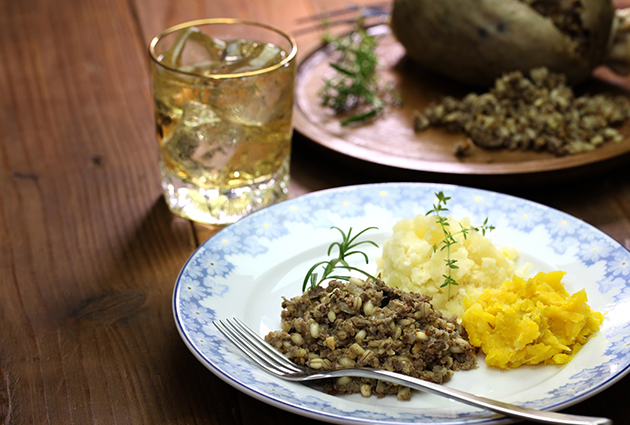
Country Life’s guide to Burns suppers
Country Life reveals the key ingredients to a successful Burns supper.
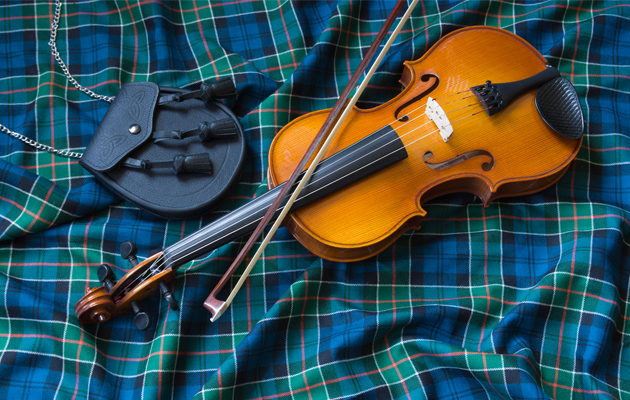
How to dance a Scottish reel
Dancing a Scottish reel is a skill known properly to a select few; join the club with our fantastic step-by-step
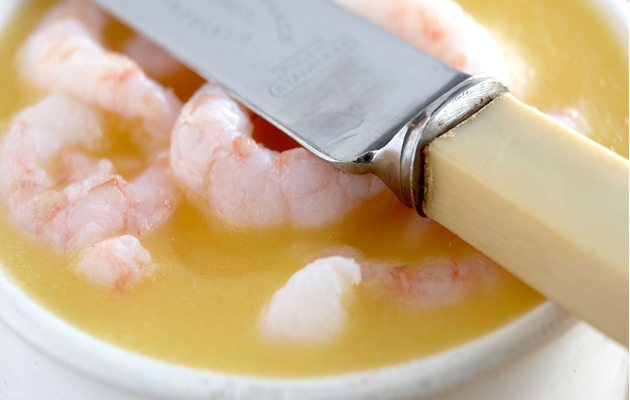
Credit: Alamy
Creamy prawn pots for Burns night
Prawn pots and whisky are essential for an authentic Burns night.
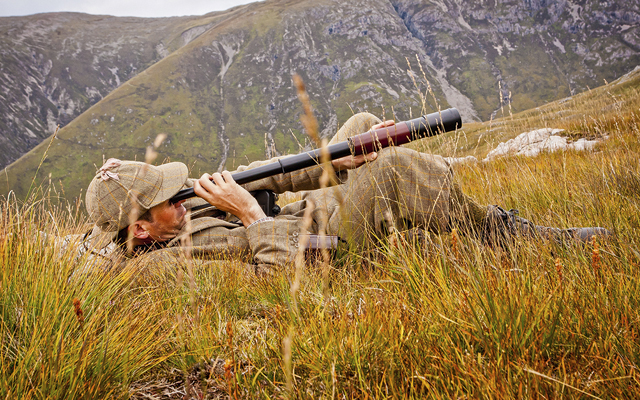
From moor to plate: red deer stalking in Argyllshire
Country Life's Editor accompanies four leading chefs to Argyllshire to stalk red deer, before returning to London to learn how
Mary Miers is a hugely experienced writer on art and architecture, and a former Fine Arts Editor of Country Life. Mary joined the team after running Scotland’s Buildings at Risk Register. She lived in 15 different homes across several countries while she was growing up, and for a while commuted to London from Scotland each week. She is also the author of seven books.
-
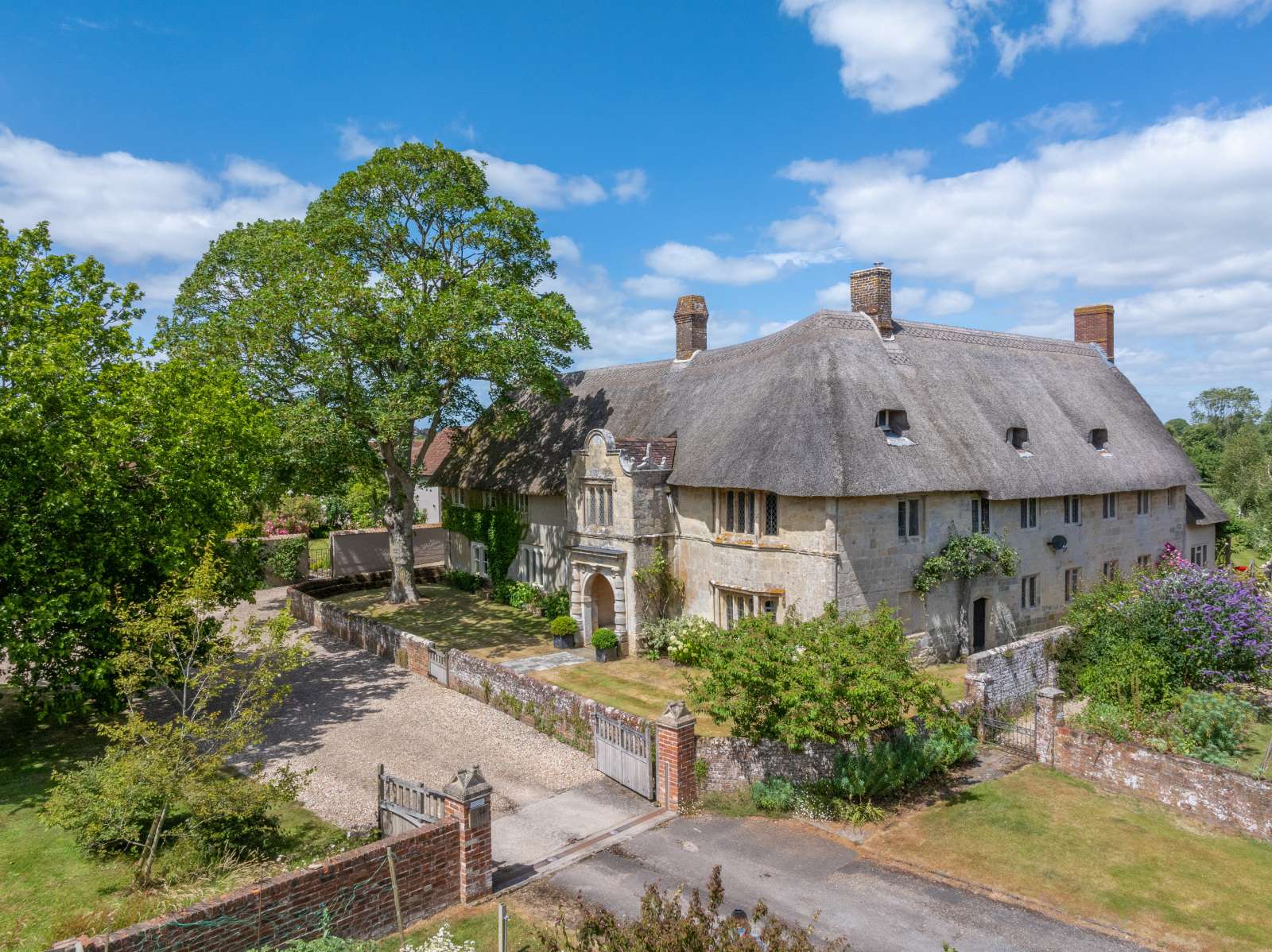 The distinctive and historic home that might just be 'one of Dorset’s most picturesque'
The distinctive and historic home that might just be 'one of Dorset’s most picturesque'Grade II*-listed Manor House, set in just under eight acres, dates from the 16th century.
-
 Giles Kime: 'Darkness in an interior is equally as beguiling as large amounts of natural light'
Giles Kime: 'Darkness in an interior is equally as beguiling as large amounts of natural light'Why subtle lighting is about more than a dimmer switch.
